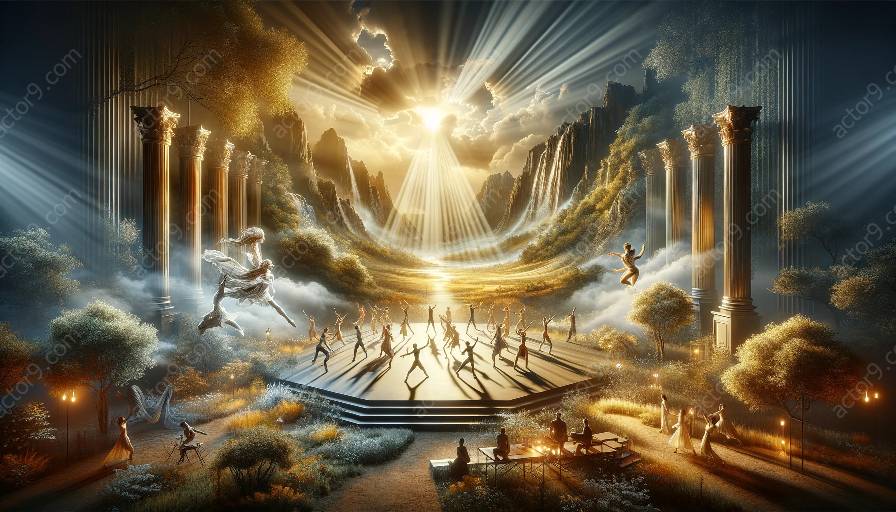Lighting plays a crucial role in enhancing the emotional impact of physical theatre performances. It affects the audience's perception and experience, adding depth, meaning, and symbolism to the art form.
The Role of Lighting in Physical Theatre
Lighting in physical theatre is a powerful tool used to create atmosphere, evoke emotions, and guide the audience's focus. It complements the performers' movements and expressions, adding another layer to the storytelling process.
Exploring Emotional Responses in Physical Theatre Performances
Physical theatre relies on the synchronization of movement, gestures, and expressions to convey emotions and narratives. Lighting significantly contributes to the amplification of these elements, heightening the audience's emotional engagement.
Impact of Lighting on Emotional Responses
Lighting has the ability to set the mood, establish the tone, and alter the perception of space in physical theatre performances. It can create suspense, intimacy, or a sense of grandeur, directly influencing how the audience responds emotionally to the narrative unfolding on the stage.
Enhancing Dramatic Tension
Dynamic lighting changes can underscore moments of tension and conflict, intensifying the emotional impact of the performance. Whether through stark contrasts or soft, diffused illumination, lighting has the power to evoke a range of emotions, from fear to hope, affecting the audience on a visceral level.
Symbolism and Visual Metaphors
Lighting is often used symbolically in physical theatre to represent internal states, conflicts, or transformations. The interplay of light and shadow can convey subtleties that may not be explicitly expressed through dialogue, creating a multi-dimensional experience for the audience.
The Art of Light Design in Physical Theatre
Lighting designers in physical theatre are tasked with understanding the nuances of storytelling through visual elements. They collaborate with directors and choreographers to craft a lighting design that harmonizes with the narrative and the movement, enhancing the emotional impact of the performance.
Conclusion
Lighting is a dynamic and integral component of physical theatre, shaping the audience's emotional response and enriching the overall experience. Understanding its role and deliberate use in creating atmosphere and meaning enhances the immersive nature of physical theatre performances.




































